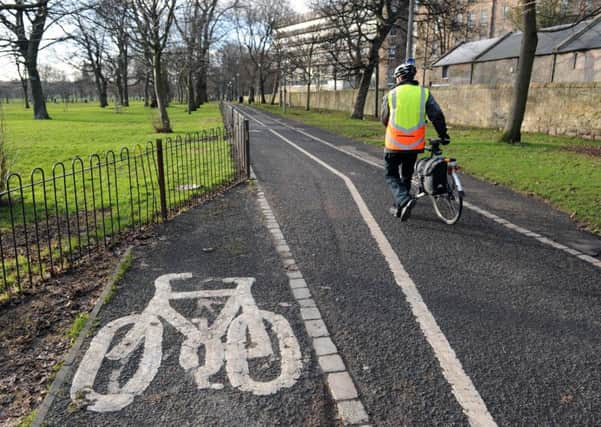John Lauder: Walking and cycling vital to reach net zero


It’s an ambitious target but one that has been surpassed by the Scottish Government, which is aiming for net zero by 2045.
It’s also a commitment that requires major changes from both government and society which can feel inconceivable in day-to-day life. That’s why we shouldn’t forget that small changes can also make a difference.
Advertisement
Hide AdAdvertisement
Hide AdSimply put, if those of us who can all walked and cycled more, we could help Scotland meet its net zero targets that bit quicker. Whilst it won’t work in isolation, we know from a report by Friends of the Earth that more walking and cycling in urban areas could cut carbon emissions by a third, making a significant contribution to meeting targets.
Scientists at Oxford University have advocated this too after undertaking a recent study to investigate whether emissions could be saved by replacing short car trips with walking and cycling. In discovering that half of the car journeys they were monitoring were of less than three miles, it was found that 41 per cent of the journeys could have been swapped for a walk or cycle and saved 5 per cent of “avoided” CO2 emissions.
Replacing driving a car with walking or cycling to your destination isn’t always possible, of course. Our lifestyles dictate the number of journeys we need to make and as a result of housing and retail outlets increasingly in out-of-town locations, journeys often need to be made in the car and journey lengths can be longer. Continued investment in public transport and a rethinking of housing policy is therefore key to providing more environmentally friendly options.
This goes hand in hand with making infrastructure easier, more convenient and safer to encourage more people to walk or cycle.
To help tackle congestion, as well as emissions from delivery and service vehicles, there’s also scope for e-cargo bikes to be used whenever possible and this could help to remove up to 7.5 per cent of all traffic mileage in urban areas.
As well as walking and cycling helping the environment, we also shouldn’t forget the physical benefits of getting active. Physical inactivity costs the UK an estimated £7.4 billion per year and is responsible for one in six deaths.
The Scottish Workplace Journey Challenge we run every year is a case in point. Throughout the month-long activity this year, which encourages workplaces to ditch their cars and take a more eco-friendly route to their desks, 5,000 people made over 85 sustainable and active journeys which saved 75,000kg of CO2 emissions, burnt 10 million calories and collectively saved £89,000 in travel and petrol costs. Not only did people become more active but the economies of scale speak for themselves.
Ditching the car in favour of walking or cycling may seem like a no-brainer, but it’s not as easy as that. Not only does it require lots of pedal power to encourage lifestyle changes, but the right infrastructure needs to be delivered so that high quality cycle routes can be created. Public transport options also need to become more accessible.
Advertisement
Hide AdAdvertisement
Hide AdThere really is strength in numbers and that’s what is needed now to make a sizeable impact to help protect our environment for the next generation.
John Lauder is National Director Scotland, Sustrans